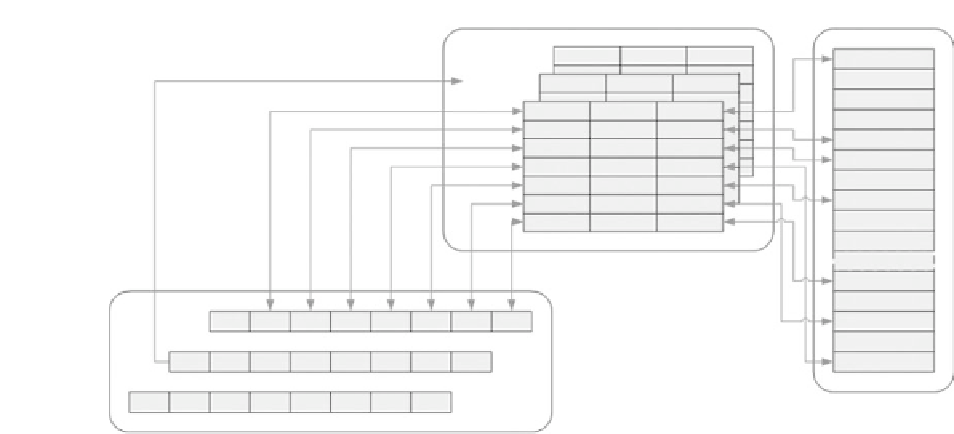Image Processing Reference
In-Depth Information
ECU memory
DAQ list
ODT #2
0
Address
Length
Element
Element
Element
Element
Element
Element
Element
Element
Element
Element
1
Address
Length
ODT #1
ODT #0
0
Address
Length
1
Address
Length
h
h
h
h
h
0
1
2
3
4
5
6
Address
Address
Address
Address
Address
Address
Address
Length
Length
Length
Length
Length
Length
Length
DAQ
DTOs
Element
Element
Element
Element
Element
PID
00123456
PID
10123456
PID
20123456
FIGURE .
Structure of a DAQ list.
sequence numbering of the XCP packets and a “length field” defining the length of the XCP packet.
Depending on the actual communication protocol used, some of these header ields might be miss-
ing (e.g., in case TCP/IP is used as communication protocol, the node address is omitted, as IP's
addressing scheme is used).
18.6.1.3 Synchronous Data Transfer
The synchronous data transfer feature of XCP allows for a data exchange between XCP master and
XCP slave that is performed synchronous to the XCP slave's execution. his exchange is carried out
by using “DTOs,” which are transferred via DTO packets. The memory regions of the XCP slave's
memory that are the source or the destination of the transfer are linked to the DTO by so-called
“object description tables (ODTs).” A sequence of one or more ODTs are grouped into a so-called
“data acquisition (DAQ) list” (see Figure .).
Hereby the DAQ-DTO contains a packet identification field (PID), which is used to link the DAQ-
DTO to the respective ODT (PID ield matches ODT number). For each element within a DAQ-DTO,
a corresponding ODT entry is present in the ODT, which references a specific part in the ECU's
memory by the attributes address and length. Upon processing of the ODT, the ODT entries are
used to transfer element from the ECU's memory into the corresponding element in the DAQ-DTO
(in case of data acquisition) and vice versa (in case of data stimulation).
DAQlistscaneitherbestaticallystoredinanXCPslaveECU'smemoryordynamicallyallocated
by the XCP master via special protocol command packets.
18.6.1.4 Online Calibration
For the online calibration feature of XCP, the slave's physical memory is divided into so-called “sec-
tors,” which reflect the memory's size and limit constraints when reprogramming/erasing parts of the
memory. his division into sectors thus describes the physical layout of the XCP slave's memory.
The logical layout is described by dividing the memory into “segments.” his division does not need
to adhere to the physical limitations of the division into sectors. Each segment can further consists of
one or multiple pages, where at any given instance in time only one page of a segment is accessible to







